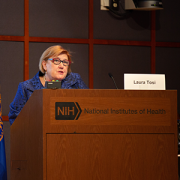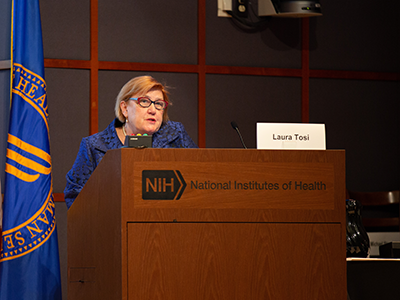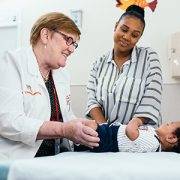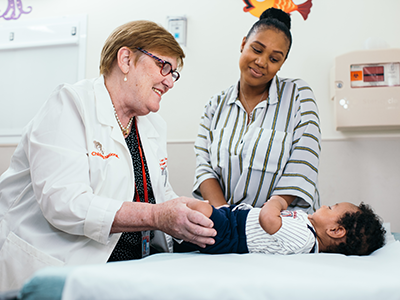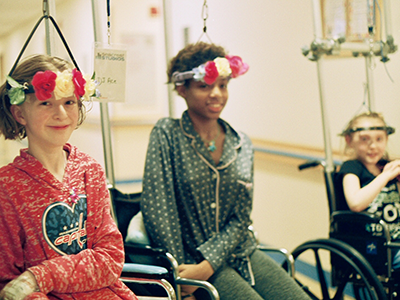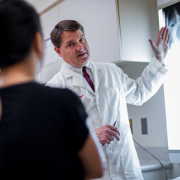Refining criteria for childhood skeletal fragility and osteoporosis
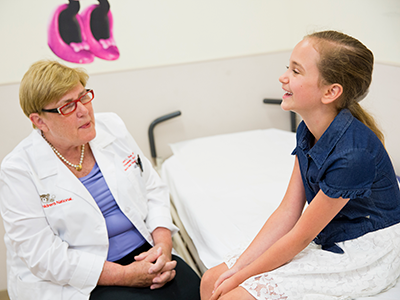
Orthopaedic surgeon Laura Tosi, M.D., presented information about bone fractures and skeletal fragility in children at this year’s POSNA Annual Meeting.
It’s true that broken bones are often a typical part of childhood, says international bone health expert Laura Tosi, M.D., an orthopaedic surgeon at Children’s National Hospital. But for some children, a single bone fracture under the right circumstances may be a signal that a child needs a closer look to rule out underlying skeletal fragility.
Dr. Tosi presented on this topic as part of the Pediatric Orthopaedic Society of North America’s (POSNA) 2020 Annual Meeting. The presentations were conducted virtually this year due to COVID-19.
“We know that between 27 and 40% of girls, and 42 to 51 percent of boys will have at least one fracture during childhood,” she says. “What we have also seen over time is that almost 40 percent of children who have one fracture will have more. How do we tell which children with a fracture may need our help to avoid future ones?”
During her session, Dr. Tosi discussed how adding more nuance to clinical evaluation criteria for childhood fractures can help identify which children should be evaluated for conditions affecting bone density.
To widen the scope and make sure an underlying bone density issue is detected and treated as early as possible, Dr. Tosi says there are some specific findings that should suggest the need for further exploration:
- Does the child have an a priori risk for a fragility fracture due to a genetic bone disorder(such as osteogenesis imperfects (aka brittle bone disease) or immobility caused by a disorder such as spina bifida, cerebral palsy or muscular dystrophy?
- Is there a mismatch between the fracture severity and level of trauma that led to the injury?
- Does the child’s history include any of four factors known to be associated with increased fracture risk: early age at the time of the first fracture, intolerance to cow’s milk, low dietary calcium intake or high BMI values.
- Does the child have a vertebral compression fracture?
- Is there a family history of frequent fractures (which may indicate a previously unidentified genetic condition)
Dr. Tosi also laid out specific evaluation steps for a skeletal fragility condition when a child’s fracture meets criteria, including:
- Family, nutrition and exercise histories
- A detailed physical exam
- Complete radiograph review, including previously existing films and bone densitometry
- Rule out rickets and child abuse
- A complete lab work up
“It can be extremely challenging to identify if a child’s first bone fracture is a result of typical childhood activity or something else,” says Dr. Tosi. “But the risks of waiting to evaluate a fracture that meets some of the criteria above may mean we are delaying a treatment that might improve bone density and prevent a future fracture altogether — which is always what we’d hope to do.”
In the past, bone health experts felt that the word “osteoporosis” should not be used in children and pushed for the term “low bone density for age.” That perspective has begun to change thanks to important advances in our understanding of the genetic basis of bone fragility, the important role of chronic conditions and how the use of bone-active medications can significantly reduce fracture risk and improve function in certain conditions.
She then spoke about the benefits of early detection for conditions causing skeletal fragility by presenting compelling evidence of the resiliency of a child’s bones when they are managed appropriately.
She noted that she’s seen significant bone remodeling in patients with serious bone degeneration due to osteogenesis imperfecta and leukemia, for example, thanks to early detection and treatment.
“Our knowledge of bone density and bone health is improving, but is still imperfect,” she concluded. “But as we learn more, and are able to appropriately identify and treat kids with skeletal fragility or osteoporosis earlier, we can continue to refine how we evaluate and care for all of them.”



